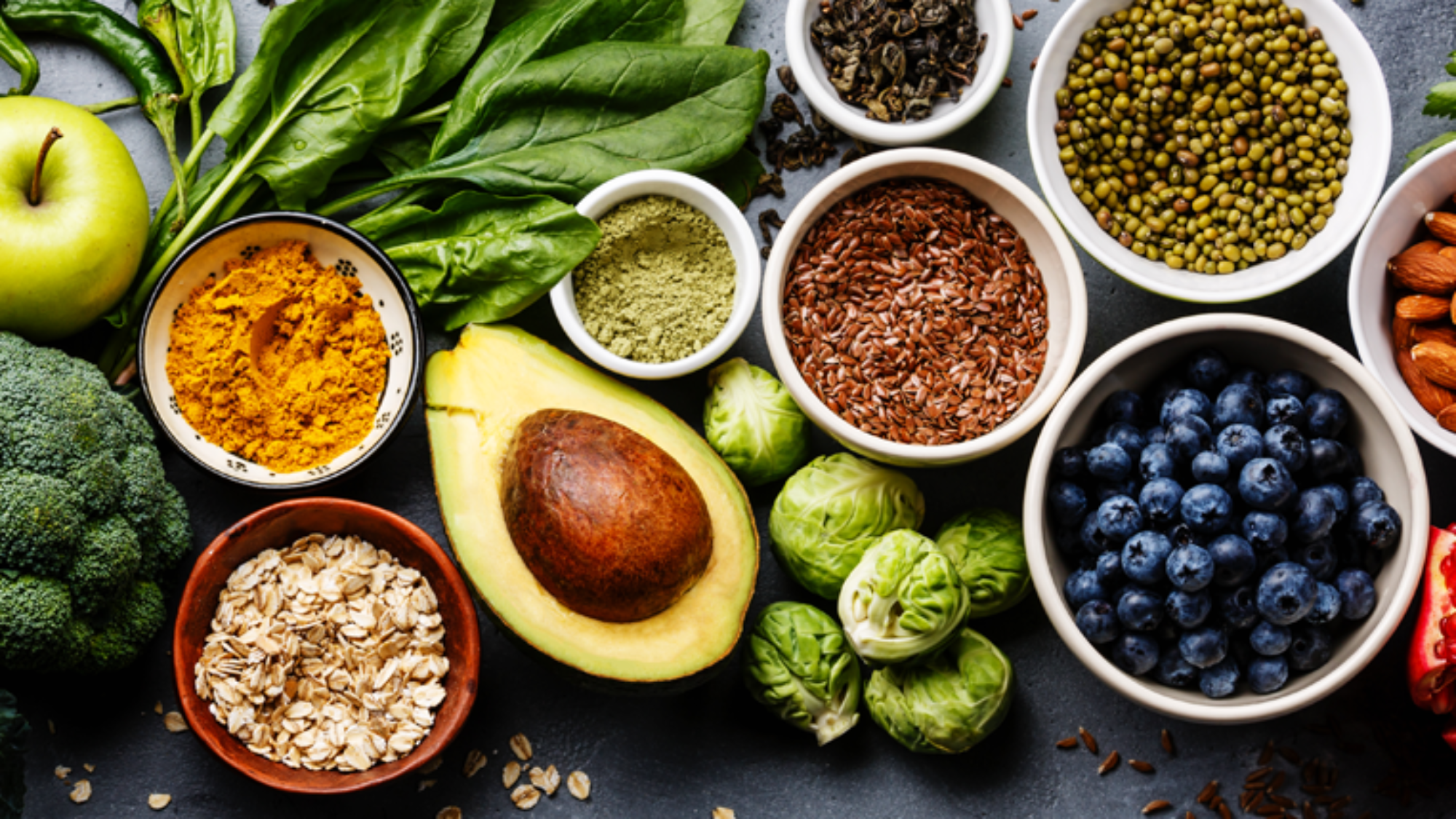Nutrition and Exercise for Diabetes Management

Unquestionably, nutrition and exercise together form an integral part of a diabetes management program. Second to diabetes medications or insulin therapy, these lifestyle interventions play a critical role in deciding the success and sustainability of any diabetes management plan.
The keto diet is one way of eating that has been found to be effective in managing diabetes. The ketogenic diet is a low-carb / high-fat diet that focuses on high quality fats and a variety of low-carb vegetables and fruits along with moderate protein intake.
Many foods in the keto diet can be considered superfoods due to active micronutrients like antioxidants, vitamins, phytonutrients and minerals. These offer a myriad of health benefits that can help you maintain better control over your blood glucose levels, cholesterol levels, and blood pressure while cutting down your risk of developing complications from diabetes.
Likewise, exercise or physical activity, if performed regularly and consistently, not only aids you in maintaining a healthy body weight, but can boost your insulin sensitivity for improved blood sugar levels. Below are some proven foods and exercises for diabetes management that are recommended by experts across the globe.
Nutrition for Diabetes Management
The foods you consume provide an array of nutrients that can support various health benefits, such as delaying aging signs or controlling blood glucose levels. They are not a substitute for medication, but eating a healthy diet can help lead to relatively better outcomes.When considering nutrition for diabetics, be sure to include foods with a low glycemic index – a measure of how quickly a food can increase blood glucose levels after consumption. Below are keto-friendly superfoods that may help manage diabetes:
Fatty Fish: Fish like wild salmon is an excellent source of omega-3 fatty acids, known to reduce heart disease risk. With high fat and protein content and almost no carbs, you will feel full and satiated for longer. This prevents overeating and keeps your blood sugar in better control.
Check out this recipe for Pan-Seared Salmon with Lemon Dill Sauce
Green Leafy Vegetables: Kale, collard greens, and spinach are rich in vitamins (A, C, and K) and minerals (magnesium, calcium, and potassium). They can help manage high blood pressure and can help prevent cancer.
Try this recipe for Spinach Dip
Non-Starchy Vegetables: Vegetables like artichokes, asparagus, broccoli, and beets are low in carbs. Rich in vitamins, fibers, and minerals, these vegetables help you sate your hunger. The American Diabetes Association (ADA) classifies them as low GI foods that are good for diabetics.
You'll love this recipe for Roasted Broccoli with Garlic and Parmesan
Tomatoes: Due to lycopene (an antioxidant), tomatoes - in any form - can help decrease the risk of macular degeneration, heart disease, and cancer. It can also lower cardiovascular risk in type 2 diabetics.
Berries: Loaded with antioxidants, vitamin C, and fiber, berries like strawberries, blueberries, and raspberries have anti-inflammatory properties, and can reduce the risk of cancer and heart disease. These are great for diabetics.
Treat yourself to a Strawberry Fields Milkshake
Yogurt: Consumption of certain dairy products, such as yogurt, is found to be linked with lowered risk of developing type 2 diabetes.
Nuts and Seeds: Walnuts and flaxseeds contain omega-3 fatty acids, magnesium, and fiber that improve heart health and decrease cholesterol levels. Nuts usually have low GI. Replacing carbs with nuts and seeds can help lower blood sugar levels. They also lower your risk of developing diabetes.
Exercise for Diabetes Management
We all know how important being physically active is, and it becomes even more important if you are a diabetic. Maintaining a healthy body weight is critical to effective diabetes management. Daily exercise is known to improve insulin sensitivity and lower insulin resistance, especially when combined with a proper diet.In general, people with diabetes either don’t produce enough insulin or have some degree of insulin resistance, meaning their bodies do not react effectively to the insulin they are producing. In both cases, exercise can help a diabetic reduce his/her blood sugar levels. If you have some degree of insulin resistance or your body is unable to produce the required insulin deficiency, your muscles will still consume glucose to produce energy during exercise sessions.
Here are exercises that are beneficial to a diabetic:
Aerobic Exercises: These assist the body in utilizing insulin in a better way. Aerobic workouts also lower blood glucose and cholesterol levels, while improving circulation and reducing cardiovascular risk. Aerobic activities may include the following:
- Brisk walking
- Bicycling
- Low-impact aerobics
- Dancing
- Swimming
- Jogging
- Ice-skating
- Hiking
- Rowing
- Free weights or weight machines
- Use of resistance bands
- Calisthenics (exercises that use your own body weight to strengthen muscles, such as push-ups, planks, squats, sit-ups, lunges, and wall-sits)
- All categories of muscle-building exercises
At work:
- Park farther from the entrance to lengthen your walk
- Use the stairs instead of the elevators
- Take a short break every 30 minutes (even if it’s just to walk to the water cooler or stretch your arms and legs)
- Do stretches and chair exercises at your desk
- Take a short walk during your lunch break
- Have “walking meetings” whenever possible
- Perform daily chores, such as dusting, vacuuming, and washing dishes
- Walk instead of drive whenever possible (to the grocery store, to get a cup of coffee)
- While on a phone call, walk around the room or go up and down the stairs
- Do yard work (mowing the lawn, raking leaves, weeding, planting flowers)
- Play active games with your children (soccer, pillow fights, hide-and-seek, etc.)
- Take your dog for a stroll around your neighborhood (pet is optional)
- Do stretches, squats, and walk in place while watching TV
- Static stretches
- Dynamic stretching (back kicks and high knees)
- Yoga
- Pilates
- Walking sideways or backwards
- Walking straight on the heel to the toe
- Standing from a sitting position
- Standing on a single leg for as long as possible
- Lower body and core muscle training
Conclusion
“Diabetes taught me discipline.”This is what U.S. Supreme Court Justice Sonia Sotomayor has to say about her condition. Having discipline is the key to leading a normal life with diabetes. This includes being consistent with taking your medication, eating a diabetic-friendly diet, and exercising regularly. Proper food and exercise are not only crucial for better blood glucose control, but can also help limit your dependency on medication and insulin.
About the Author:
Peter D. Griffin holds a degree in health journalism and loves reading and writing on topics related to health and wellness. His regular writings are related to medical research, nutrition, fitness, health issues, drug discoveries, and the latest trends in the health and medical community.
***
Jumpstart your weight loss journey with THE KETO 30 Challenge!-
Posted in
Authority Article, Nutrition, Nutrition Article









